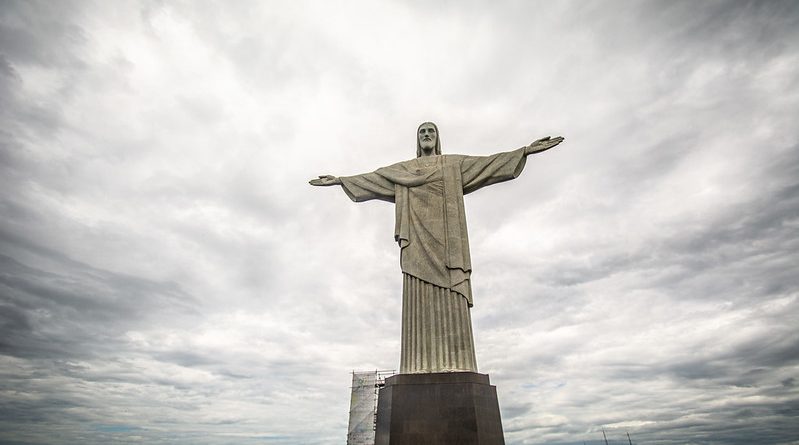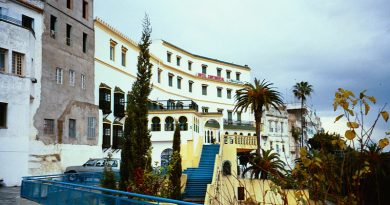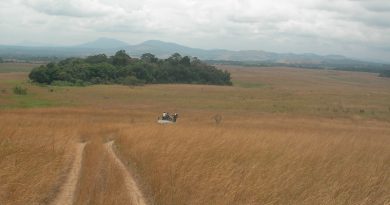The Regions of Brazil
Nordeste
North East Brazil is a historical region with many major cities like Savador, Sao Luis and Olinda. It is made up of a combination of forests, now reduced to pockets of forest as the result of extensive de-forestation, the Sertao backlands, a desert area, the Maranhao state transistional between the desert and Amazon regions.
Salvador
Salvador was founded by the Portuguese in 1501and remained Brazil’s most important city for the next 300 years. Sugar, then tobacco, gold and diamonds provided Salvador with enormous wealth and, after Lisbon, it became the most important city in the Portuguese empire. But when the sugar industry collapsed, it fell into decline and in 1763 the capital moved to Rio. Salvador is called the African soul of Brazil. Nearly half the population is black, descendants of three and a half million African slaves.
The old town of Salvador is known as Pelourinho and is a jumbled collection of narrow cobbled streets, plazas and the largest site of Baroque architecture in Latin America. A room in a hotel in Salvador’s Pelourinho district will cost you about 10 dollars a night, including breakfast. Pelourinho actually means whipping post and it was the area where the slaves were tortured and sold. It was colonial Brazil’s slave labour that worked the industries that made Salvador rich. Here you can see Bahisan women selling traditional acaraje and abara cuisine dressed in white Baianas costumes. It’s scattered throughout with a staggering 300 churches of Portuguese and black slave origins and temple like the church of Sao Francisco with a richly ornate interior.
Set against the churches is a modern city of sky scrapers, offices blocks with great views of the Atlantic. Part of Salvador is like a shanty town, inhabitant by “favela” dwellers living in hillside hovels, who fortunately have improving conditions and most now have electricity.
Sertao
The dusty interior of the northeast is known as the Sertao, or backlands. It is often hit by droughts which sometimes last for years and it makes it impossible to farm crops. In the Sertao the economy is based around cattle ranching which was established to feed the workers on the giant sugar plantations.
Life in the Sertao is often characterised as bleak and sometimes brutal with much poverty and farming relying on out-moded manual methods. Although cattle ranching has become an important industry, this is still one of the poorest parts of the northeast. It’s hard for the people of the Sertao to avoid starvation and extreme poverty, and the people are tough and adept to survival. But this is still Brazil, where festivals and celebrations are a way of life and given the importance of cattle, it’s hardly surprising that they have their own festival.
Lencois
Lencois is a colonial town founded in 1844 when diamonds were discovered in the surrounding countryside. It’s a lush escape from the wilderness of the Sertao desert, a wooded and mountain region now recognised as a National Park. It’s popular amongst travellers and offers great opportunities for hiking.
Itaparica
Itaparica is classic small town Brazil. At the bus you can have your boots shined by at least 15 children. It is the largest island in Baia de Todos and is popular with Brazilians who go to swim in the calm bays and is something of a weekend resort.
Reconcavo
The Reconcavo region is a green land and home of the first meeting between Portuguese, Indian and Africans. The small town of Cachoeira is worth visiting, known as “the jewel of the reconcavo” , full of colonial architecture and the centre of the Candomble religion.
Alagoas
The capital of Alagoas, Macceio is a beautiful modern city with fantastic beaches, and Penedois a colonial historic vision. There are many scenic fishing villages along the eastern coast, and coconut fringed beaches.
Pernambuco
Recife is Brazil’s fourth largest city and the capital of Pernambuco. In colonial times it was a port for the sugar industry. It’s still a major entry point to the country, but now it’s best known as a beach resort. Although the city beaches like Boa Viagem can get polluted and overcrowded, the coast north and south of Recife has some excellent beaches which are protected by coral reefs ensuring calm seas. It’s a city steeped in tradition with some of Brazil’s best visual and folk arts.Nearby Olinda is one of the best preserved colonial cities in Brazil dating back to the 17th century, and Igarassu, 25 miles north of Recife city is the oldest settled city in Brazil, founded in 1535.The Fernando de Noronha collection of islands has beautiful marine life, waters, and is popular for diving with tourists.
Paraiba
The city of Joaoa Pessoa is mentioned in all Brazilian history books, named after the governor who said “I refuse” to advancement by his enemies, and was later assassinated sparking a revolution in 1930. It is the home of he Igreja Sao Francisco, on of Brazil’s finest churches.
Ceara
Beautiful, glorious beaches epitomise Ceara, famed also for its folk crafts, lacework and traditional food. The Caninde is the site of a great religious Pilgrimage to O Santuario de Sao Francisco das Chagas, a 250 year old pilgrims site where for a whole month during September, some 250,000 Catholics make the journey to the small town to worship Sao Francisco de Assis (Francis of Assis – patron saint of animals).
Piaui
One of the poorest states in Brazil, Piaui is a desert state but it does offer great beaches and two amazing national parks, in the Parque Nacional da Serra da Capivara you’ll find prehistoric sites and rock paintings – the top prehistoric site in South America.
The Amazon
The Amazon in the North of Brazil is 4 million square miles of river and jungle, fast flowing rivers totalling 50,000 miles. Although it’s quickly being evaded to make way for American ranchers, there’s still much of the jungle left to explore.
Belem, Para
Sitting at the mouth of the world’s largest river, Belem is the main port for ships that ply the Amazon. From here you can travel by boat all the way to Peru. It’s one of the wettest cities in the world and acts as a gateway to the people and the ways of the rainforest. The vastness of the Amazon basin means that biologists are able to identify only 70 per cent of the fish sold in the famous Ver O Peso market. Also in Para, Salinopolis is a major Atlantic beach resort with top mineral spas and deserted beaches.
Marajo
Marajo sits right on the equator at the mouth of the Amazon and is one of the world’s largest fluvial islands, bigger in size than Switzerland. Each wet season the Amazon floods this area and whole towns are submerged. Marajo is the only place in Brazil you’ll find buffalo in large numbers. Flooding gets so bad here that buffalo dive underwater for food. They’re used for their meat, milk and labour.
Roraima
Roraima is the final frontier between the Venezuelan border and the Amazon, and home to the Yanomami tribe, a threatened tribe representing about a third of Brazil’s remaining Indians.
Rondonia
This state has become rapidly developed and de-forested, and is also a distribution centre for cocaine. The Nordestinos Indians remain a small but fragmented group here. It’s a depressing site of history and nature fading into extinction.
Espirito Santo
Probably the least popular state in Brazil out-shadowed by its stunning neighbours of Rio and Bahia, Espirito Santo is probably best visited for its quaint fishing villages and seafood. The town of Guarapari has 23 lovely beaches set against a mountain backdrop.
Minas Gerais
Minas Gerais is the size of France, a vast interior plateau with some of the highest mountain peaks in Brazil and vast deep valleys. There are a number of interesting historic colonial cities within the vast region like Sao Joaoa del Rei, Ouro Preto, site of the largest deposits of gold in the western hemisphere, and Mariana. It is the site of Brazil 3rd biggest city, Belo Horizonte. In the south of the state are 13 spa towns which are well developed health resorts with natural springs. The town of Caxambu is famed for its water and a great place to unwind after the Rio carnival.
Sao Paulo
Sao Paulo city is the economic and industrial heart of Brazil and the richest state in South America. With a population of 17 million, it is also home to 11% of all Brazilians. It is an incredibly cosmopolitan city with people from Japan, rural Brazil, Italians and many others making up the Paulistanos populations. It’s hot and smoggy in summer and cold in winter, so it’s not the ideal tourist haunt but there’s much to discovery, like the colourful Mercado Municipal market, the art museum with the best collection of art in Latin America and some of the bestmulti-ethnic cuisine in the country.
The Paulista Coast is home to stunning beaches like Ubatuba, Ilhabela island and the port of Santos which are great retreats from the furious city.
Parana
Curitiba is the capital of Parana, a thoroughly modern city yet calm and civilized with a mainly European residents. From here you can visit the “stone city” of Vila Velha, a collection of ancient naturally formed sand stone pillars. Nearby Parangua is one of Brazil’s major ports, and is a colourful town of colonial buildings and fantastic market goods with the best of Brazil’s exports. The state is home to the stunning Iguacu Falls, on the border of Paraguay and Argentina, with The Grand View of the raging falls.
Santa Catarina
Mainly farm lands inherited from German and Italian settlers, the relatively affluent and egalitarian state of Santa Catarina is abounding with beautiful beaches, wide open bays and clear blue shores. It’s become a recent beach fashion centre, with holidays resorts popular with Brazilians.
Rio Grande do Sul
Port Alegre is a modern city which many visitors will pass through, it’s worth stopping for a while and taking in the neo-classical architecture and friendly locals. The Serra Gauchamountains are great for hiking and as a retreat.
Centro-Oeste
The Central West part of Brazil is one of the last great unexplored wildernesses on earth. The state of Matto Grosso do Sul is the wildlife paradise of Pantanal Matogrossense, one of the great secrets of Brazil, a wetlands containing over 200 species of bird in an area the size of Great Britain. The only way to discover it is by plane. The Mato Grosso is depicted in Peter “007” Fleming’s novel “Brazilian Adventure”, a search for a missing British Colonel. The regions is bush land and home to many of Brazil’s native Indians- It’s the wild west of Brazil.
Destination – Brazil




